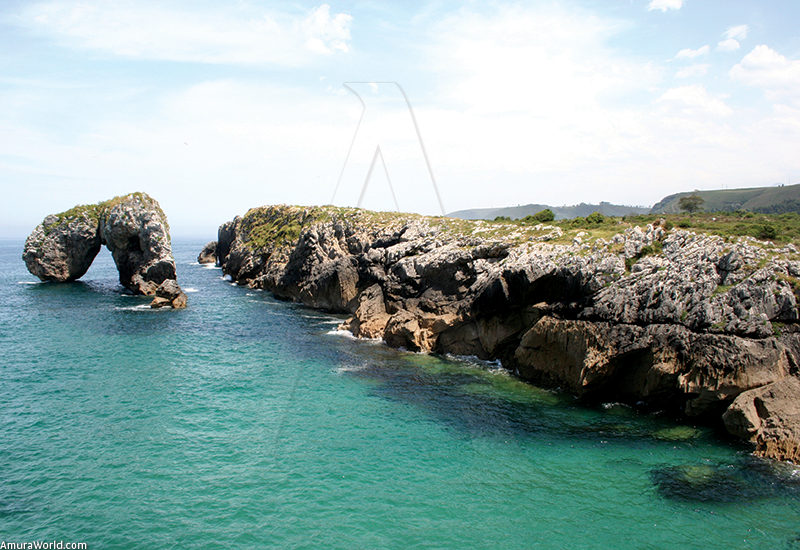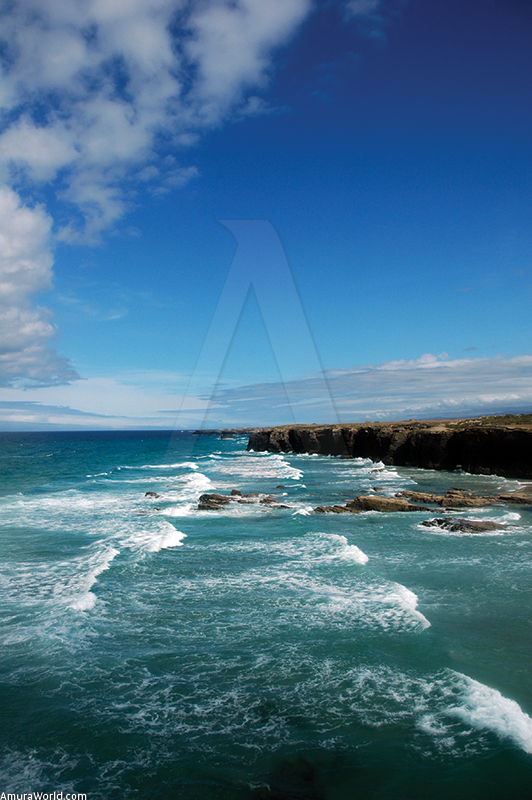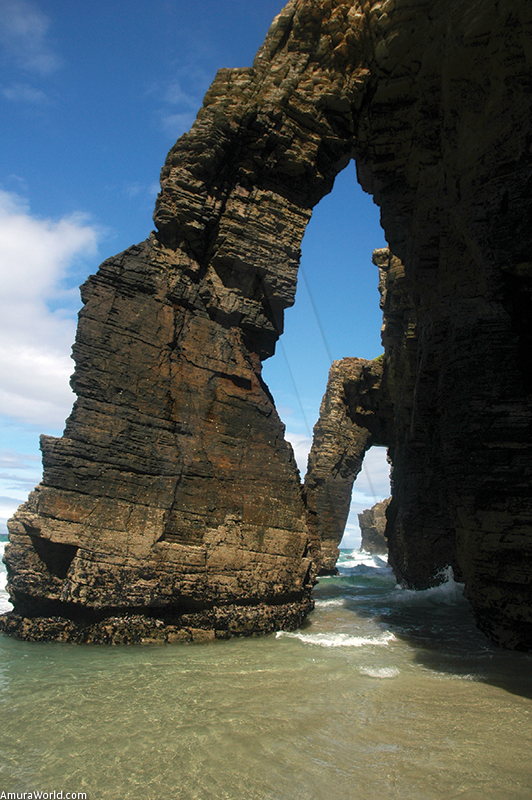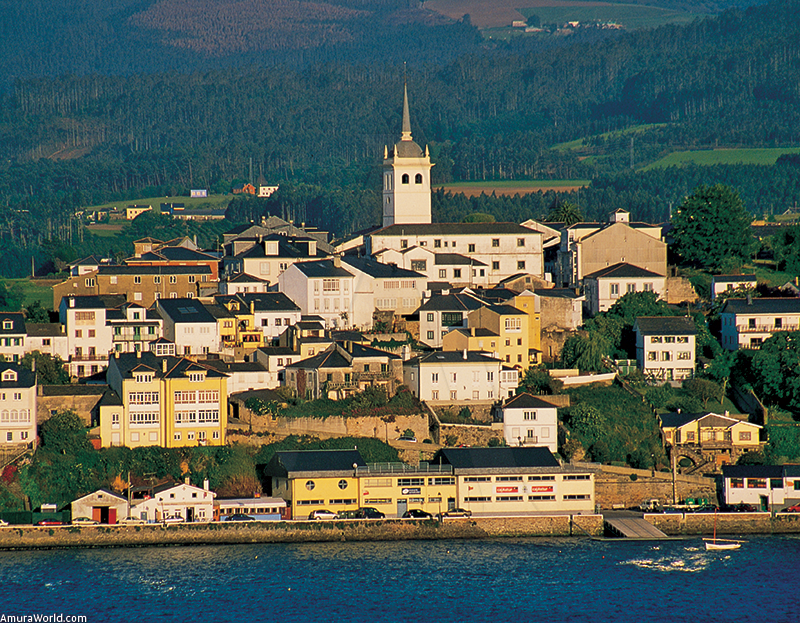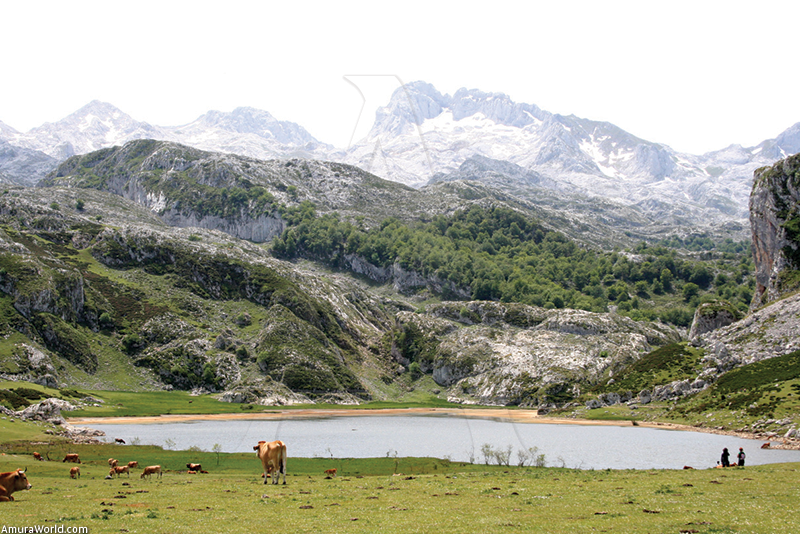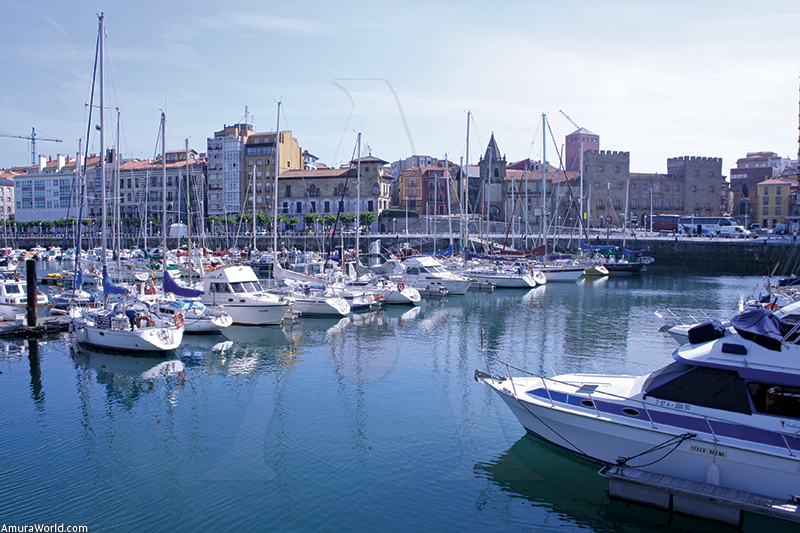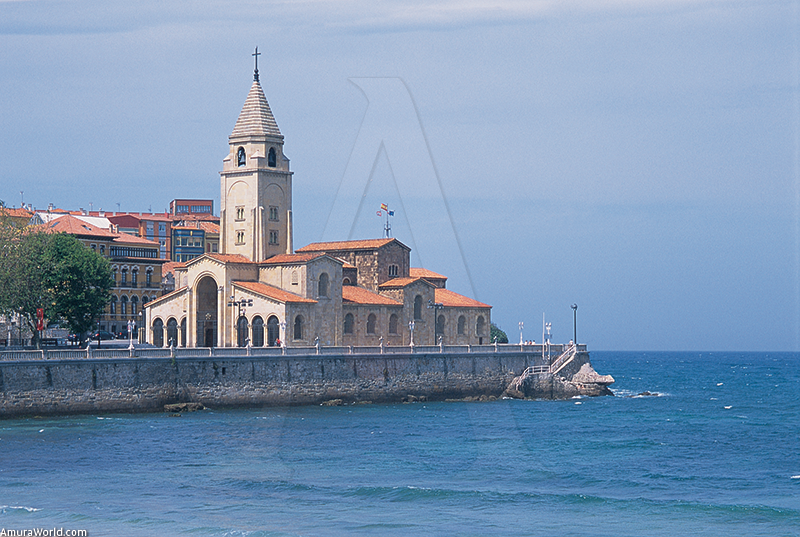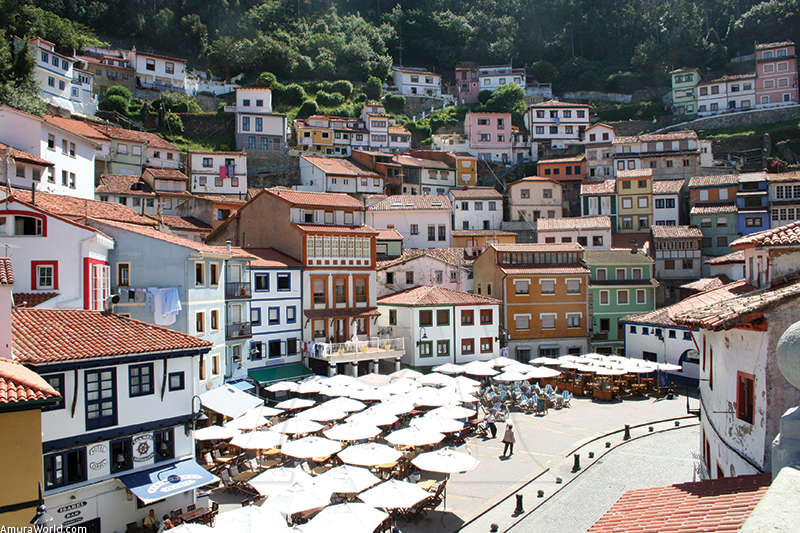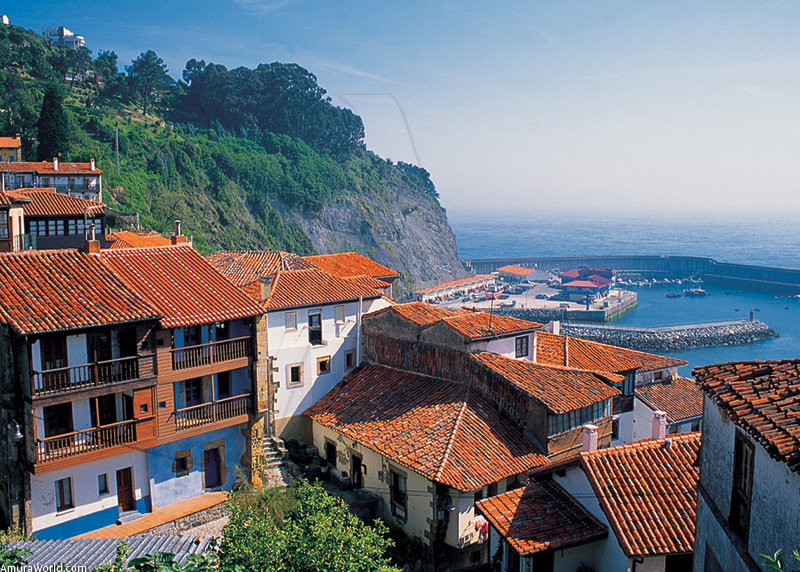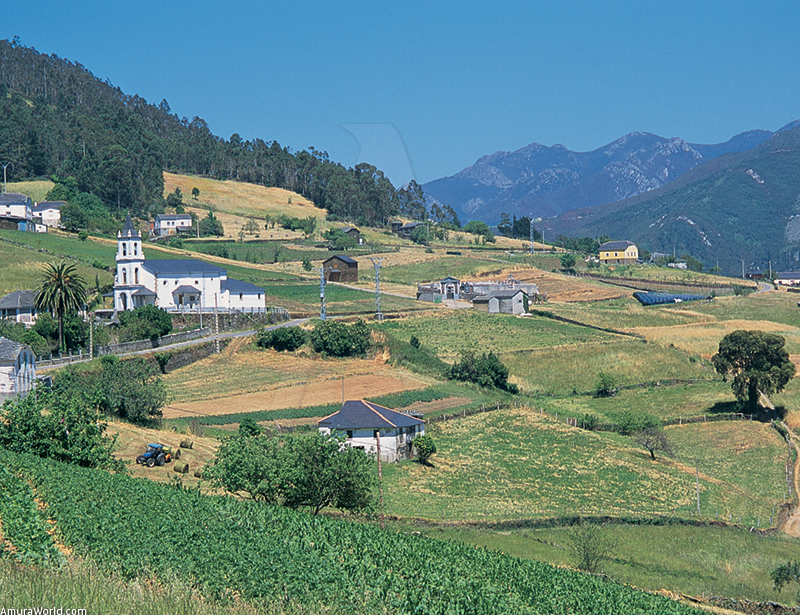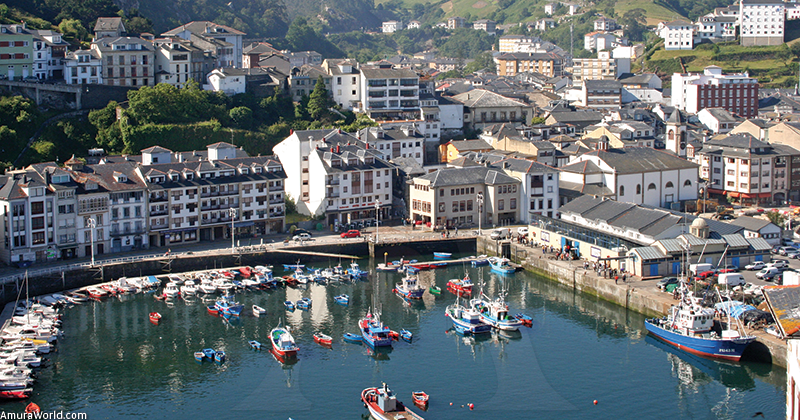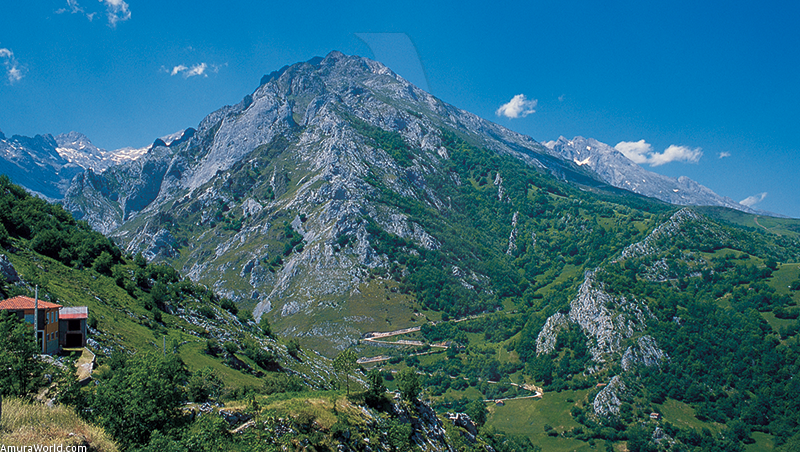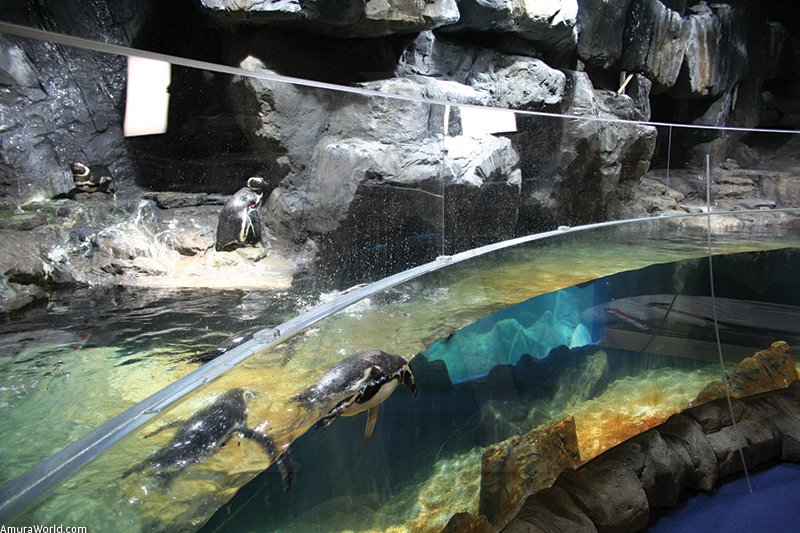From Llanes to Castropol, a coast with an Emerald Sea
The sea of northern Spain has drawn an amazing, charming, infatuating coast of bays that give way to astounding beaches and inlets that trace intriguing cliffs. The region charms with its fabulous scenery and this green Spain extends an invitation to discover different traditions when exploring Asturias and Galicia to the rhythm of this beautiful coast.
Llanes and the Picos of Europa
Our meeting place was Llanes, an ancient fishing and whaling port protected by a long cliff that hides a very sheltered entrance. A simple village since Roman times, Llanes became important in the Middle Ages.
We can visit the ruins of its 18th century turreted wall, the solid gothic Santa Maria church, convents and historic monuments. The traces left by those known as “Indianos” (Spanish emigrants who returned to their country after making a fortune in the American colonies) are amazing and can be seen in the impressive mansions and homes of Llanes and the whole region, all with a palm tree in the garden. In Colombres, a scant 30 kilometers (18.6 miles) away, we can visit Villa Guadalupe, the blue house of Mr. Noriega, who had immigrated to Mexico and which was converted into the Archivo de Indianos (the Museum of Emigration). Before setting sail along the coast we visited the region of the outstanding Picos de Europa National Park, which culminates with the Naranjo de Bulnes (2519 m/8500 ft) and the Torrecerredo (2648 m/8687 ft). A beautiful highway allowed us to access Cangas de Onis, with its exceptional Medieval bridge built on Roman foundations, and the Santa Cruz chapel, which rests on a dolmen and which was the first capital of the kingdom of Asturias, created by King Pelayo, protagonist of the reconquest. Pilgrims to the important Virgen de Covadonga cave come to pray and see the Santina, which stands guard over the tomb of Pelayo. This magnificent place is where the basilica and other religious edifices are located.
Riding along a narrow highway, we reached the Enol and Ercina lakes. There, we contemplated a stupendous scenery including the solid east and west mass of the high Picos in the background. We reached the Cabrales region, in which we visited the Cares cave, a naturally cold and humid cavern in which the famous cheeses are matured.
Following the Cares River, with its turbulent, transparent waters in which salmon and trout can be caught, we penetrated an impressive chasm and climbed to the beautiful town of Sotres, hidden in a small valley.
We lodged in the Hotel Casa Cipriano and next day began our tour on all terrain bikes, ascending along the glacier valley and observing the amazing, majestic sight of the sharp, gray walls of the Picos that defy even the best mountain climbers. We descended along the side of Cantabria, a forest area of evergreen pines and plains located on the hillsides of the Picos, to reach the stunning Valle de Potes, place in which we experienced the strange sensation provided by the Fuente Dé cable car, which, suspended by a cable stretched between the bottom of the valley and the peak (1850 m/6069 ft), took us up in only three minutes and forty seconds to observe the stupendous view of the Picos.
We continued our journey with a visit to the Santo Toribio de Liébana monastery, which guards the largest piece of the cross of Jesus Christ and which celebrates, this year, the Año Santo Lebaniego Jubilee, opening the Puerta del Perdón (the Door of Forgiveness) and celebrating the mass of the Pilgrim.
The charming town of Potes is remarkable because of its 15th century Torre del Infantado, which dominates a town with beautiful stone bridges that span the river, narrow streets and exquisite restaurants, and we visited the striking Santa María Lebeña church, of pre Roman Mozarabic style built in 925.
Finally, after crossing the intriguing Deva Pass, a canyon of impressive vertical walls, we reached Unquera, renowned for its “corbatas” (the name given to some pastries) and we checked into the charming Molino de Tresgrandas, a member of the Casonas Asturianas (association of small, charming quality hotels of rural Asturias).
From Llanes to Lastres
We reached the town of Llanes early, the sailboat was ready, the sea was calm, the wind from east to west Lastres is a town of steep streets that zigzag towards the port. It is protected by the cliff and dominated by its church and every house has a vista of the horizon. In each window a woman awaits the return of her sailor.
The highways wend their way among the apple orchards that adorn this area known for its cider, the famous Asturias cider, which is served from up on high and the length of the arm to form froth. Night rested on the town and the lights of Lastres, a restful shelter, were reflected in the sea.
From Lastres to Gij6n
The wind continued to be in our favor, we passed Cabo Lastres without any problems and headed west, pushed by a southwestern wind, observing this coast of hills, cliffs, beaches and coves, pass- ing the Villaviciosa River and reaching Gij6n in good time.
Its great bay. closed off by Cabo Tbrres, is divided into two beaches by the Cerro de Santa Catalina. The watchtower. located between the land and the sea. divides the city into two parts and on its crown is El elogio al horizonte, the work of the sculptor Chillida. Its sports harbor is excellent and we stayed there for two days so that we could visit the biggest city of Asturias and its surroundings.
Cerro Catalina was the center of Gigia. a Roman villa since the first century and you can visit the ruins of the thermal baths under the esplanade of the San Pedro church, from where you can enjoy the magnificent view of the San Lorenzo Bay. framed by buildings and very crowded with its residents.
You can explore the ruins of its wall, the Revillagigedo palace, the chapel of San Juan Bautista, the enclosed Plaza Mayor (the main plaza)... and it is a pleasure to take an afternoon stroll, enjoy a couple of drinks in the bars as well as a meal in the finest restaurants, discovering a cozy, relaxing ambiance. The botanical garden, near the huge Universidad Laboral, offers a perfect example of the leniency of the climate since it is a place where there are various exotic plants, many brought over by the “Indianos”.
A step away is Oviedo, the capital of Asturias, a surprising city established in the eight century. It is renowned for its fabulous palaces, its elegant gothic cathedral that conserves its pre Roman Cámara Santa, the San Vicente and San Pelayo monasteries and the Balesquida chapel, which safeguards the image of the Virgen de la Esperanza. Its small plazas are charming and the Campoamor Theater, where the Principe de Asturias awards are presented, is the most important building of this modem and active section of the city, which is packed with shops and restaurants.
On the outskirts we found gems of pre Roman art the San Julián de los Prados church, with its pictorial late Roman décor and. nestled in the folds of the Monte Naranco. the Santa Maria Palace and the San Miguel de Lillo church. Both buildings, built by Ramiro 1 in the ninth century, are superb examples of the magnificence of the kings of Asturias.
From Gijón to Cudillero
With the same breeze and blue sky we passed Cabo Torres to make our way to Cabo Peñas, the northernmost point of the Iberian Peninsula, passing beaches, fishing villages, like Cand£s and Luanco. and deep cliffs... spots perfect for relaxation. In Cabo Peftas the cliffs can reach 100 meters (328 ft) above the sea and its lighthouse dominates the north, as if it where awaiting the arrival of other Celts, keeping guard over the ocean which, on this day. was calm and of a deep blue hue.
In the western part of the cape the wind fell, forcing us to use the motor to reach San Juan de Nieva, which guards the entrance to the Avilas estuary. which we entered to explore Avilas, an industrial city that preserves, in its historic center, beautiful examples of its Medieval and Renaissance architecture. Its plazas, gardens, palaces and restaurants, like theTataguyo. make it a spot suffused in a pleasant ambiance.
Following the coast where small hills expire, we reached Cudillero, a small, varicolored port hidden within a natural, rocky amphitheater. Its colorful houses, reached by staircases, are located on the hills and it has a plaza at the bottom of a gorge and a church that guards the sea. It is an exceptional port, a charming town which offers lovely tours, including one to the nearby El Pito Palace, built by Forunato Selgas and that exhibits master works of painting and furniture.
From Cudillero to Castropol
The district in which the best fabes. or beans, for fabada are harvested ends in a sea with cliffs that enclose beaches, bays and coves. A light west wind permitted a very pleasant sail, passing from capes to beaches, following the gullies. After the Vidio and Busto capes we reached stunning Puerto de Luarca, guarded by a great tower that protected the residents from Viking attacks, adorned by a light- house and the cemetery. The view of the fishing dock, where you can see the port, with its houses settled on the hills and joined by the narrow streets, is spectacular.
This spot retains the air of mystery of a town that lives from the sea. Following our route, we discovered enchanting Puerto de Vega, whose sea wall, with its chain that closed the entrance, protects the ancient town dominated by the houses of the sailors. We passed the Ria de Navia estuary and Cabo Cebes before finally entering the immense Ria del Eo estuary, the border with Galicia, and docking in the small pier of Castropol. a beautiful town built on a crag that guards the entrance to the river mouth. In front is Robadeo. the first city of Galicia. However, a stunning journey awaited us before leaving Asturias.
On the mountain highways that took us south we reached the beautiful rural zone of the Oscos, where time seems to have stood still. Taramundi lies hidden in the heights of the hills while, at the bottom of the valley, we discovered the old water mills (Os Teixois). the beautiful H6rreso and Cabazos. where grain is stored. Villanueva shelters the ruins of the fabulous San Martin Medieval monastery and Mon hides several magnificent palaces with artistic coats of arms.
In Santa Eulalia we lodged in a charming “casona". an ancient rural home that conserves its granary, chapel and kitchen, which was the heart of the home. The town conquers with its charm, the cowbells jingle in the hills and the Seimeira waterfall is to be found at the end of a pleasantry stroll in the heart of the forest
In Grandas de Salime we visited the ethnographic museum before reaching the sumptuous scenery of the Navia River reservoir, where we used a canoe to traverse an impressive gorge with typical towns clinging to the sides.
We discovered Castel6n de Coafla, the best conserved walled settlement of Asturias, where you can observe round houses and Roman streets, to finally enter the region of Cangas de Narcea, a small, charming city that produces the best wines, and the Fuentes de Narcea park, which protects the oldest oak forest in Europe, in the Bosque de Muniellos Natural Reserve, located in the middle of majestic mountain scenery.
The Corias monastery amazes because of its size and majesty, the rivers run among the mountains and valleys, the cows graze on the hillsides and the scenery is a dream of perfection.
Back in Castropol we went to the Ribadeo marina. on the other side of the estuary, the first port of Galicia, to continue with our route. Asturias was a wonderful journey along the length of a very beautiful coast of cliffs, heavenly beaches and mysterious estuaries, meeting exceptional people and discovering fabulous historical monuments, fields and mountains of great splendor. A nostalgic feeling enveloped us when we left Asturias, a true natural paradise that fascinates without end.
El acuario de Gijón
The Guijon Aquarium, a Spectacular Example of Creativity
located on the edge of Guijón’s west beach, the aquarium’s modern architecture is amazing and rises over land and sea, inviting visitors to discover a universe of water.
In the zone devoted to the rivers they have created a scene of mountains with running water, where you can observe otters, trout and salmon and where real trees and ferns give it the natural aspect of the mounts of Asturias.
In the part dedicated to the Cantabrian Sea we can observe manta rays, octopi and endemic fish and there is a zone of waves in which there are mussels, goose barnacles and urchins as well as lobsters.
The talent of the architects allows you to reach an area where visitors can touch sea stars, clams and anemones.
Then exotic regions appear including the penguin aquarium and those of the tropical waters of the Caribbean, the Indo Pacific. Polynesia and the Red Sea. However, the most surprising is the huge aquarium where sharks swim by (such as the bull shark, that measures almost 3 meters (10 feet) in length, or the gray shark) as well as marine turtles and numerous types of small and large fish. Some channels allow people to penetrate into this gigantic aquarium while sharks swim overhead.
Finally, the auditorium is the center of information and also includes a vast aquarium
The Guijdn Aquarium opened its doors in June 2006. It features modem techniques, futuristic designs and generates an exceptional attraction to the beauty of the sea and the rivers, creating a wonderful journey through the realm of the waters of Asturias and the planet.
Info
Acuario de Gijón
Playa Poniente
T 985 18 52 20
Text: Patrick Monney, Ricardo Galán ± Photo: Patrick Monney, Ricardo Galán

